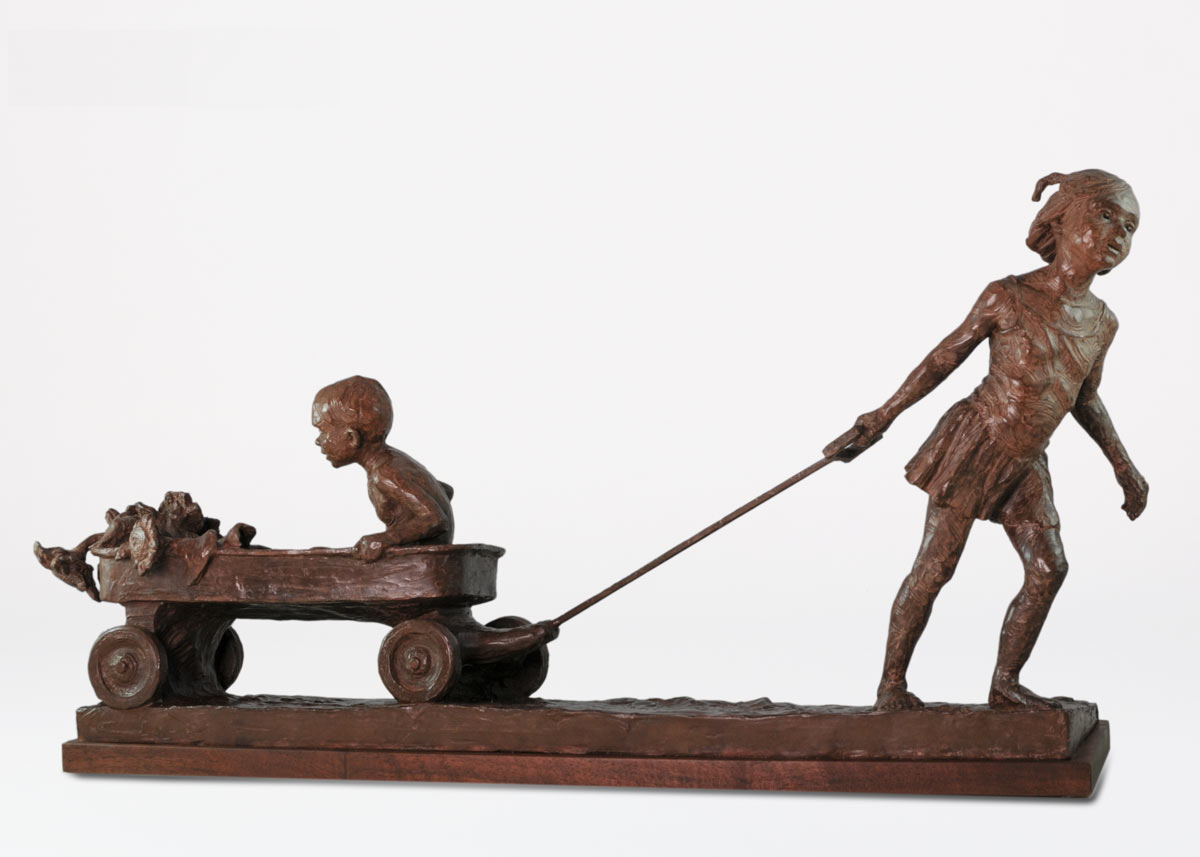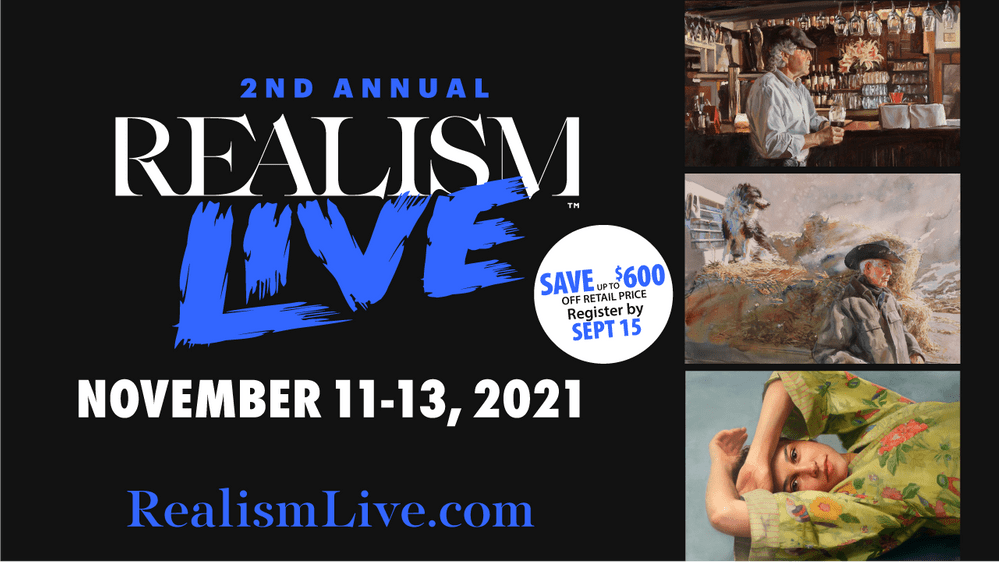Figurative Art > Mother and artist Mardie Rees answers the question: “How could I possibly navigate this area of life and be the artist I truly felt called to be?”
BY MARDIE REES
(mardierees.com)
It takes courage to face the feelings in your heart and put them into your work. Courage is always thought of as an outward act of bravery, but its linguistic origins point to an interior action. The root word of “courage” is from Old French, coeur, meaning heart. It is the heartfelt act of engaging with what we feel most deeply and living it out in its truest form. Perhaps that is why I gravitated toward art at a young age and still feel the intrinsic need to put emotion into my work through figurative sculpture.
When I became a mother, I did not fully realize the breadth of my heart nor how deeply I could feel, and how by embracing it and bringing form to it as a sculptor I would be facing my own vulnerabilities. I did not know I would learn how to play, or love, or empathize, or experience real fear or anger, or at times see my complete ineptitude and selfishness. All of this and more is what you do not know until you belong to a child, until you hold a newborn in your arms that claims you.
When my first child, Jasmine, was born and placed in my arms, I saw her face for the first time. I was overtaken by love and reverence. Even though I had carried her for nine months, feeling all her tiny kicks and punches, I could not picture her face until she was there before me. In the months that led up to her arrival, I feared I’d have to let my sculpting tools lie to collect dust and motherhood would be my sacrifice and true creation. I knew my female heroes, Camille Claudel, Mary Cassatt, and Bessie Potter Vonnoh, who had created real works of art now at the Metropolitan Museum of Art, were never mothers themselves. How could I possibly navigate this area of life and be the artist I truly felt called to be? In a word: courage.

Creating Figurative Art as a Mother
Cultivating courage meant taking simple steps toward creating work again while embracing my new life as a mother. I was so taken by my newborn’s tiny features and the nuances of her facial expressions that I carried her out to the studio within days of returning home from the hospital. Propping her up in a bouncer, I pulled out my calipers and set to work creating three portraits of her little face called “Crying, Looking, Sleeping.” I raced to complete it before she reached four weeks old, as she changed before my eyes. It was then I knew I had found my muse. I only hoped I would have the courage to be able to form in clay that which was so pure and new. I often find that which we love most is the hardest to give voice to in a visual language.
As poet David Whyte writes: “The French Philosopher used to tell himself to live to the point of tears, not as a call of sentimentality, but as an invitation to the deep privilege of belonging and the way belonging affects us, shapes us and breaks our hearts at a fundamental level . . . Courage is what love looks like when tested by the simple everyday necessities of being alive.”*
Through belonging, I unwittingly found a muse, and subsequently two more muses (children) have arrived, and I now celebrate a decade being a mama. They are now ages ten, eight, and three, and constantly inspire and stretch me beyond myself. We all begin as a baby, then a child, teen, and eventually an adult, but we do not have the ability to see ourselves. We can’t view our real identity: a beautiful, curious creature, capable of great love, mischief, play, while grappling with growth and maturity. In working from life using figurative sculpture as my medium of choice, the human life experience can give me, and all of us, the opportunity to see what we might have missed about ourselves. To again quote Whyte, “to be courageous is to stay close to the way we are made.” Through my life as a mom I have been able to appreciate the breadth of life in a new way and incorporate it into my work.
When my son was learning to walk, I watched how he learned to balance and know where to place his short bowed legs in line with his torso. He refused to try without coaching as I waited with outstretched hands just out of reach of his grasping fingers. I created a series of sculpted studies in this time period that eventually became “Baby Legs, Pick Me Up,” and a piece called “First Steps” that was inspired by his toddling into my arms. This also became the seed for “Saint Anthony’s Guiding Hand,” installed outside the maternity ward at a Colorado hospital.

I embarked on a portrait bust of my firstborn when she was just old enough to sit still to watch Elmo. Not satisfied by the many poor depictions of children I’d seen, I felt compelled to capture her again before she lost her baby face. I hoped to capture the sweet voice and her innocent eyes. This became “La Petite Fleur,” which has gained this artist mama three awards!

In simple, everyday life with kids you are bombarded with opportunities to observe each other in relationship. At the time my second child arrived, my daughter wished to be the center of our family; only through prodding and correction did she come to see this sibling as a playmate and best friend. One year a wagon arrived as a birthday present. I witnessed how my oldest would pull him around, unconcerned for his safety and ignoring his own will. I was reminded that love sometimes takes on a selfish nature, and I set to work creating “A Few of My Favorite Things” and also “Put Me Down.”



As I grew confident in my ability to sculpt children (a real technical challenge and steep learning curve), I began to study the bonds between caregivers, parents, and their loved ones. These bonds are the beginnings of belonging to ourselves and to each other. I looked to find ways to form this experience I had with my own children into a work of art.
A dear friend of mine was struggling with three children under the age of three, two of them identical twin girls. I witnessed her, exhausted and strained by their young demands, yet her steadfast love was evident. In her blue dress, she modeled in my studio juggling a twin in one arm and the other at her knee. We laughed as I opened a playpen and swapped out each toddler for their “moment” to shine as I sculpted their little hands and feet as quickly as possible. Her pillar of grace in motherhood became a piece I named “Wholehearted.”

Looking back through my mere decade as an artist mom, I feel as though I have just begun to see my coeur, my heart. I have just begun to live in the vulnerabilities of love and bring form into the simple everyday necessities of being alive. It takes courage to be an artist. It takes courage to be a mom. And it takes truly living life in fullness if we embrace them together: mom and artist.
*Whyte, David. Consolations: The Solace, Nourishment and Underlying Meaning of Everyday Words. Langley, WA: Many Rivers Press, 2014.
Related Article > Using Torso Blocks for Figurative Art
Visit EricRhoads.com (Publisher of Realism Today) to learn about opportunities for artists and art collectors, including:
- Art retreats
- International art trips
- Art conventions
- Art workshops (in person and online)
- And more!







